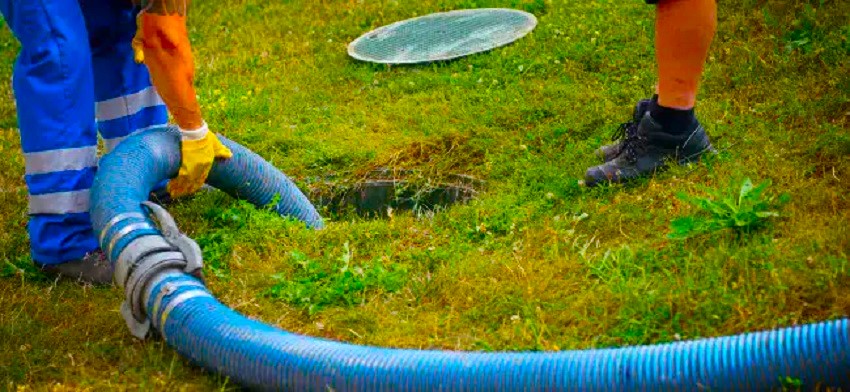Key Takeaways:
- Understanding how a septic system functions is crucial for proper home maintenance.
- Identifying and addressing common issues can help prevent costly repairs.
- Adhering to a regular maintenance schedule, including septic pumping, is essential.
- Selecting a qualified septic service provider can ensure long-term system health.
- Investing in regular septic care saves money and protects the environment.
- Community education on septic health promotes better maintenance practices.
Though out of sight and often out of mind, septic systems are vital infrastructure in a rural homeowner’s residence. These below-ground wastewater treatment structures provide an essential service, mainly where centralized sewage systems are absent. A conventional septic system consists of a tank, drain, or soil absorption field. The tank processes household wastewater, allowing solids to settle to the bottom as sludge, while the liquid effluent flows into the drain field and is further treated by the soil. Without a functional septic system, the property’s sanitation would be severely compromised, affecting the home and the surrounding environment.
Common Septic System Issues
Just like any home system, septic setups are not immune to problems. Warning signs that signal a failing septic system can range from unpleasant smells wafting from the drain field to gurgling sounds in the plumbing system, soggy ground in the yard, or even sewage backing up into the home. These red flags can escalate to health hazards and considerable repair bills if addressed. Sludge accumulation reaching a critical level often results in the contamination of surface and groundwater due to effluent overflowing—a situation that’s damaging to the environment and poses severe health risks to residents and neighbors.
The Significance of Regular Septic Pumping
The average homeowner may only realize the importance of septic tank pumping once issues arise. Regularly scheduled septic pumping services are vital in preventing sludge and scum layers from exceeding the tank’s capacity. Though specific timelines for septic pumping can vary, subject matter experts generally recommend that the tank be pumped every three to five years. Early intervention prevents backups and system failures, safeguarding human health and property integrity.
Septic Pumping Process Explained
The complexity of the septic pumping process underscores the need for engaging professional services. Specialists begin by inspecting the system, locating the tank, and uncovering access holes before lowering the pumping hose. The hose then vacuums effluent, scum, and sludge out of the tank, which is then transported for safe disposal. Experts also assess the tank’s structure for signs of wear or damage. While some homeowners may be tempted to consider a DIY route for septic pumping, the technical nature of the work, the potential for mistakes, and the necessary equipment make it an unwise choice. Trusting these tasks to skilled professionals who respect the precision required to manage a septic tank’s delicate ecosystem is critical.
Choosing a Reputable Septic Service Provider
The homeowner scheduled an appointment with a professional plumbing company to assess and carry out septic system repair following the recent plumbing issues.
Selecting a dependable septic service provider is a decision that holds considerable weight for the health of your septic system. A trusted provider will display licensure, ample experience, and a track record of reliable performance. Researching potential service providers, verifying their credentials, and reading testimonials from other homeowners is beneficial. Clear communication and transparency with your chosen provider can also lead to a better understanding of your system’s needs and its longevity and reliability.
Cost and Investment of Septic Pumping
While septic pumping incurs a cost, it should be considered a prudent investment rather than an undesirable expense. It plays a crucial part in preserving the system’s function and can save substantial money in the long term by preventing the manifold issues arising from neglect. The expenditure of routine pumping is influenced by several factors, including the tank’s size and location, the pumping frequency required, and any additional maintenance services. Despite these variable costs, maintaining the health of your septic system through regular pumping is invariably more cost-effective than the alternative of emergency repairs or complete system replacement.
Preparing Your Home for Septic Pumping Service
In anticipation of a septic pumping service, homeowners can facilitate the process by taking specific preparatory steps. Ensuring that the tank is easily accessible by clearing the area of any obstructions and locating the septic tank lid can save valuable time. Moreover, refraining from excessive water usage on the servicing day will stabilize the tank level for efficient pumping. These simple yet significant actions can not only streamline the service visit. Still, they can also help identify any additional issues that require attention, highlighting the importance of homeowner involvement in the maintenance process.
Aftercare: Post-Pumping Best Practices
Once the septic tank has been pumped, engaging in good aftercare practices can maximize the benefits of the service. Homeowners are encouraged to moderate their water usage, limit the disposal of harsh chemicals down the drain, and avoid flushing non-biodegradable items. These practices help balance the bacteria within the tank, which is essential for breaking down waste. Additionally, reviewing and possibly upgrading system components such as filters or risers based on professional recommendations can further enhance the efficiency and lifespan of the septic system.
Educating the Community on Septic System Health
Finally, community engagement and education are critical components in advancing collective well-being. By sharing knowledge and experiences about septic system maintenance, homeowners can encourage others to adopt responsible practices, thus reinforcing the community’s environmental health. Organizing local workshops, creating informational resources, and participating in local conservation efforts can foster a community-wide commitment to environmental stewardship and can play a significant role in ensuring that septic systems are cared for in a manner that benefits all community members.











